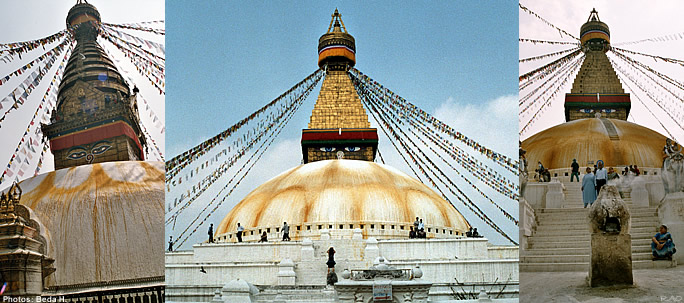|
The
great chaitya of Baudha, locally known as Khasti or Khasau, is the largest
Buddhist shrine of Nepal and one of the biggest stupas of the world. The
exact date of the construction of this 40 metre high stupa is not known.
Its location away from the ancient city of Kathmandu indicates that either
the place was chosen as s trade route to Tibet, or it was also a part of
ancient city of Deupatan or the dicision must have been guided by some
tantric principles.
It
is believed that the Mandeva Ist was the one who built the stupa after
unknowingly having killed his father, when the stone water spout of Narayanhiti
was built. The Gopal Rajbanchabali gives credit of making this stupa to
Shivadeva the First, who ruled Nepal in around 590-604 AD.
The
archaeologists believe that the main stupa of Baudha has been reconstructed
by various persons, who added more circles to the amin sacred and original
stupa to decorate it and make it huge. They also believe that some important
inscriptions and idols indicative of the age of the stupa might be hidden
in the periphery.
The
present stupa is standing on almost 7,000 square metre foundation. It is
setup with 12 corner-shaped mandala with three steps and on the top lises
the simple but massive dome. The dome is ciculated by 108 small idols of
Mahayani Buddhist deities. The dome is crowen with the cubic shape with
two eyes on each side. Unlike other Nepali stupas, it has 13 layers, representing
the 13 Bhuwanas to Nirvana-path, in square shape. The small staircase attatched
with a chain can lead a person to the golden pinnacle, which is under the
decorated umbralls, also circulated by a five-colour fringe.
|



